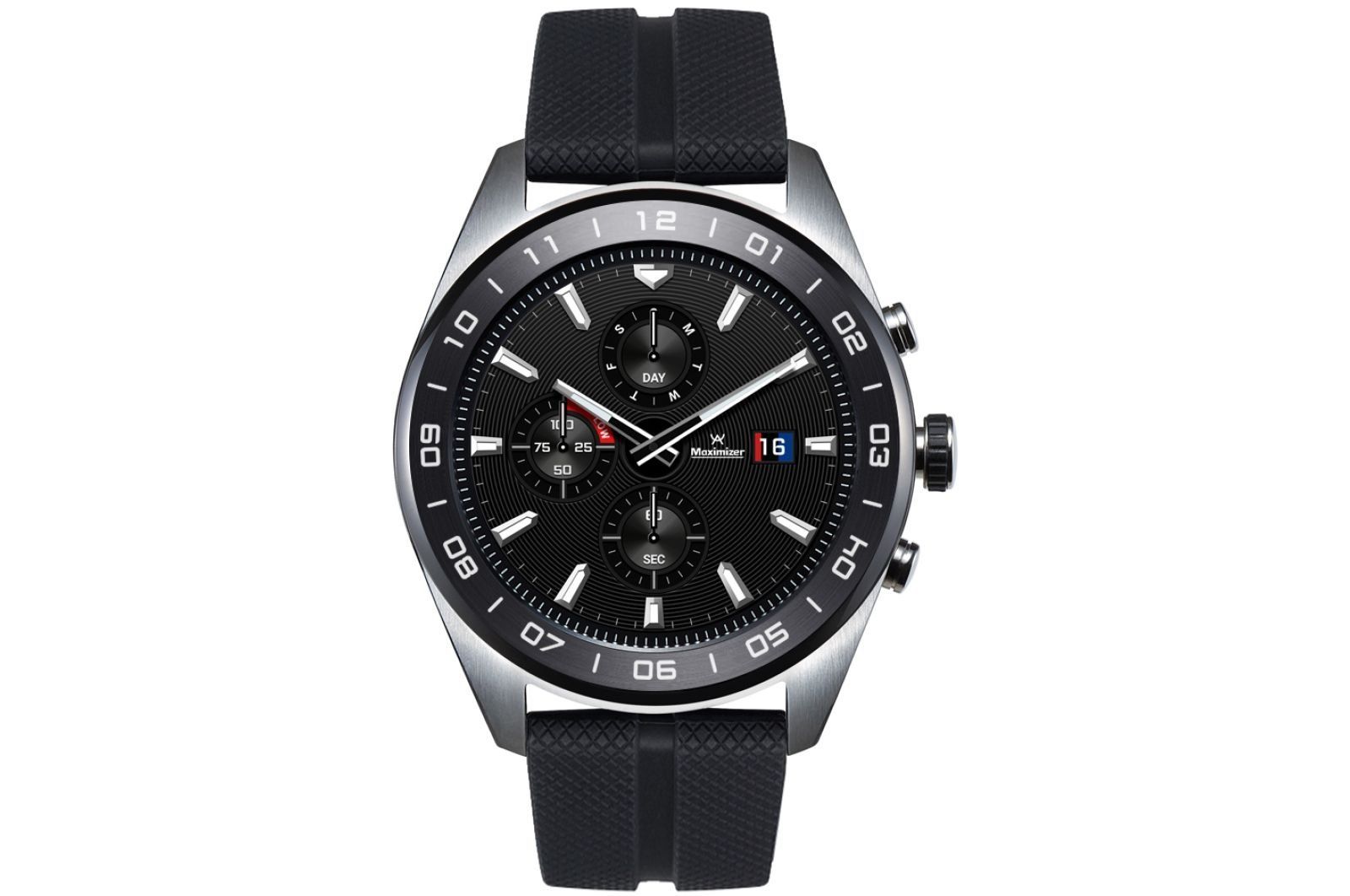Virtual reality in the palm of your hand: ASUS ZenFone AR ZS571KL smartphone
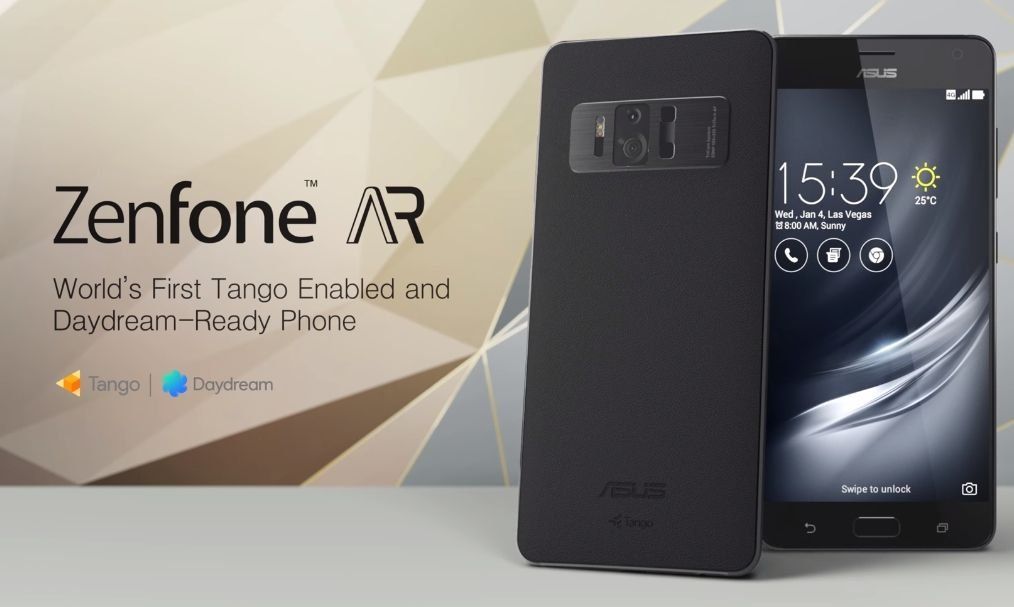
Virtual reality technologies have long ceased to be something fantastic and have recently become quite a familiar phenomenon. Augmented reality has become widespread not only in the gaming segment, but also in medicine, tourism, education and many other areas of human activity.
Modeling of virtual objects is gradually finding more and more widespread use, and ASUS decided to do its bit and launched a smartphone with VR and AR support - ASUS ZenFone AR ZS571KL. The novelty has caused a great stir among interested parties, because the model promises to be really interesting. Is it worthy of such hype, let's figure it out, too.
Design and display
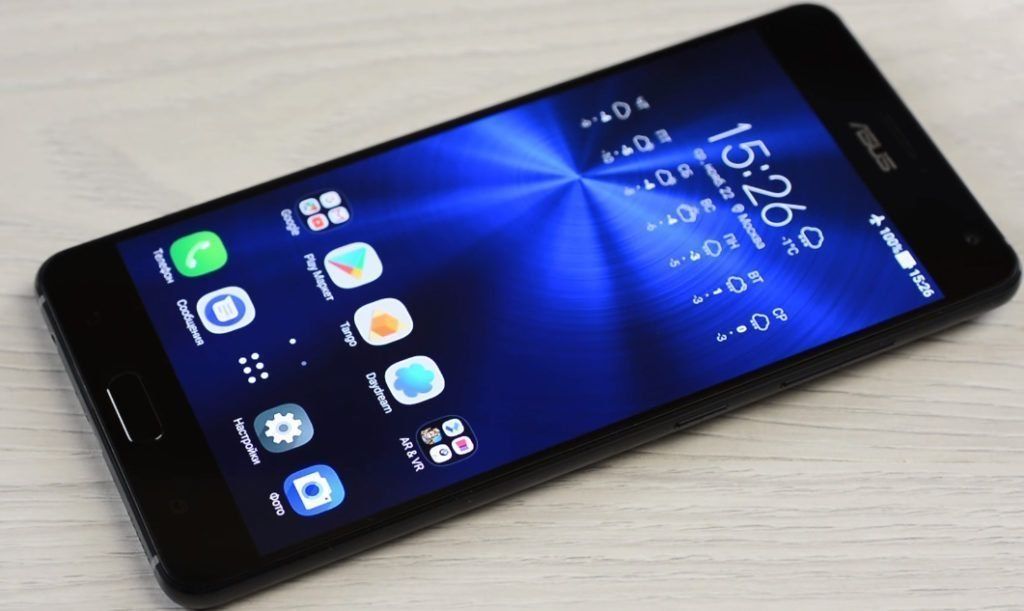
The phone has a rather simple and austere design. On the lower bezel, there are back and recent apps buttons on the sides. In the center there is a mechanical Home button.
At the bottom there is a port for USB Type C, speaker and 3.5 audio output. On the right side, the volume rocker and the off button are habitually located.
The body is made on the basis of a metal frame, and the back panel is trimmed with leather. And on the same back panel, closer to the top, there is a camera, which is probably the most unusual part of a smartphone.
The phone screen is amazing. It is Super AMOLED with a 2.5K resolution, also called WQHD, and is 2560x1440 pixels. However, even at this resolution, individual pixels on the display may still be visible when interacting with VR.
This display has excellent color reproduction with 100% NTSC color gamut and good contrast and vivid colors, it also has good blacks, it is quite saturated and deep.
Nevertheless, the brightness parameters leave much to be desired, the maximum value is only 374 cd / m22... This is a rather low parameter, so it can be problematic to use it on a sunny morning.
However, within the apartment, and even in a special device for VR, this will not be a problem.
Main characteristics
Brief characteristics are shown in the table. We will dwell on each in more detail below.
| Main characteristics | ASUS ZenFone AR |
|---|---|
| Net: | 2G (GSM 850, 900, 1800, 1900); 3G (HSDPA 850, 900, 1900, 2100 - EMEA (Europe, Middle East and Africa); HSDPA 850, 1700 (AWS), 1900, 2100 - USA); 4G (LTE) |
| Platform: | Android 7.0 Nougat with ZenUI 3.0 |
| Display: | 5.7 ", 2560 x 1440 pixels, Super AMOLED, 3,000,000: 1, Gorilla Glass 4, ASUS TruVivid |
| Camera: | TriCam, main: 23 MP, Sony IMX318 sensor, f / 2.0, LED flash, TriTech autofocus, 6 lenses, optical stabilization, PixelMaster 3.0, 4K video recording @ 30fps | motion tracking camera | depth reading camera |
| Front-camera: | 8 MP, f / 2.0, PixelMaster 3.0 autofocus |
| CPU: | Quad-core Dual-core 2.35GHz Kryo dual-core 1.6GHz Kryo Qualcomm Snapdragon 821 |
| Graphics chip: | Adreno 530 |
| RAM: | 4, 8 GB |
| Inner memory: | 32, 64, 128, 256 GB |
| Memory card: | up to 256 GB |
| Navigation: | A-GPS and GLONASS |
| WI-FI: | Wi-Fi (802.11a / b / g / n / ac) |
| Bluetooth: | 4.2 + A2DP + EDR |
| Sensors and scanners | Fingerprints (Front), Accelerometer, Compass, Gyroscope, Proximity |
| Battery: | non-removable, 3300 mAh, fast charging Quick Charge 3.0 |
| Dimensions: | 158.67 x 77.7 x 4.6 ~ 8.95mm |
| Weight: | 170 g |
| NFC system: | there is |
CPU
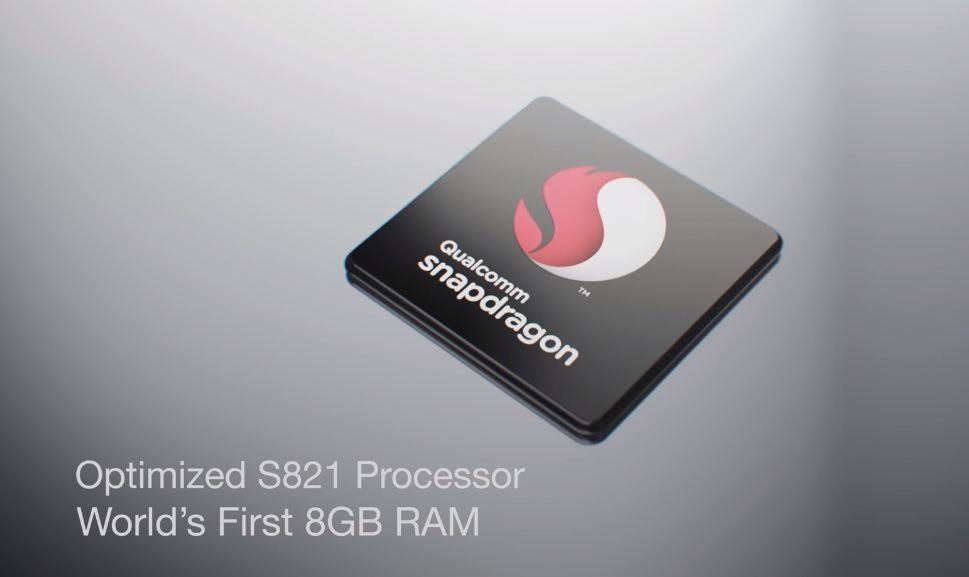
The smartphone is made on the Snapdragon 821 single-chip system of the flagship processor line.At the time of release in 2016, it was a rather nimble flagship processor, which was installed only on top models.
Since then, of course, there have appeared 8-core models like Snapdragon 845 and others like them, nevertheless, its performance is still at a fairly high level.
Many network resources write that the processor is made using BIG.LITTLE technology, where two high-performance Kryo cores with a frequency of 2.4 GHz are responsible for launching heavy applications, and 2 cores with a performance of 1.6 GHz are responsible for running undemanding applications such as checking mail or communicating in social networks to save battery.
However, the processor can safely use all of its cores, so this is a completely normal quad-core single-chip system. Its downside is that all 4 cores will work at the minimum frequency.
Despite the fact that the new chip had problems with working in multi-threaded mode, it performed well in browser tests, besides, it has an excellent graphics accelerator, which is especially important for simulating virtual and augmented reality.
The disadvantages of the system can be attributed to throttling and strong heating, nevertheless, the processor performance remains at a high level.
RAM and built-in memory
With regards to RAM, there is a choice between 6 and 8 GB versions. It is preferable, of course, to take 8, even not so much on the "more - not less" principle, but because such a processor works well with large amounts of RAM and will significantly increase performance.
The built-in memory also pleases with its quantity. There are versions for 32, 64, 128 and 256 GB. Built-in memory slot - double. You can put 2 SIM cards in it or a microSD card up to 2 Terabytes by donating a second SIM card.
OS and Software
The device runs on the Android 7.0 operating system with a special ZenUI 3.0 shell.
Asus has played around a bit with the google standard user interface and now it has some nice features.
These include the ability to drag the action center to the desktop from either side of the screen. The firmware also has its own settings menu, called "ZenMotion" through which, for example, you can set certain gestures with which selected applications will be launched directly from the locked screen.
When you start it for the first time, you will also find third-party applications, which, fortunately, can be removed, they are not hard-wired Chinese software.
Camera
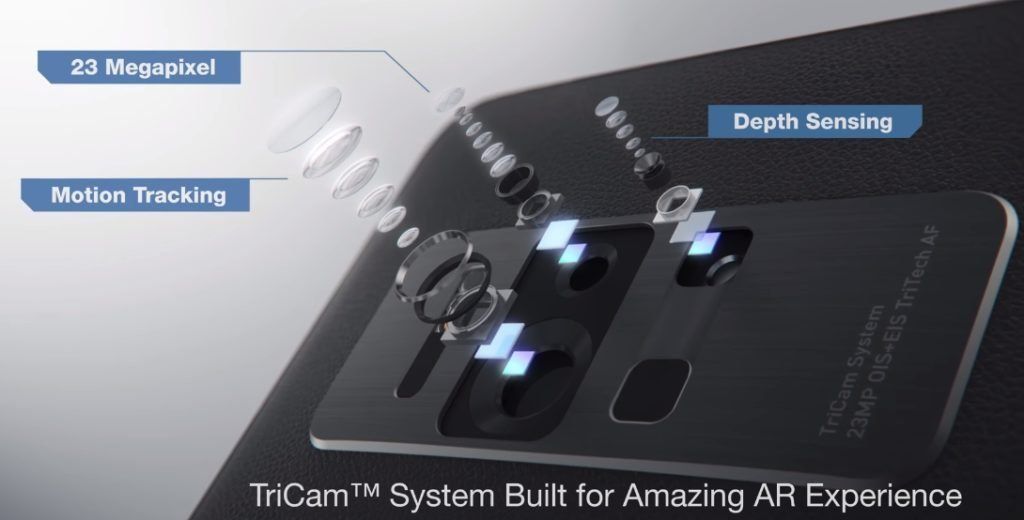
This is probably the strongest part of this phone. A high-resolution 23 MP optical sensor is installed here, in addition, there is a whole bunch of settings for the photo, allowing with the proper skills to bring the photo quality closer to a professional one. Which will be even more convenient thanks to 4-axis optical stabilization and an f / 2.0 aperture parameter.
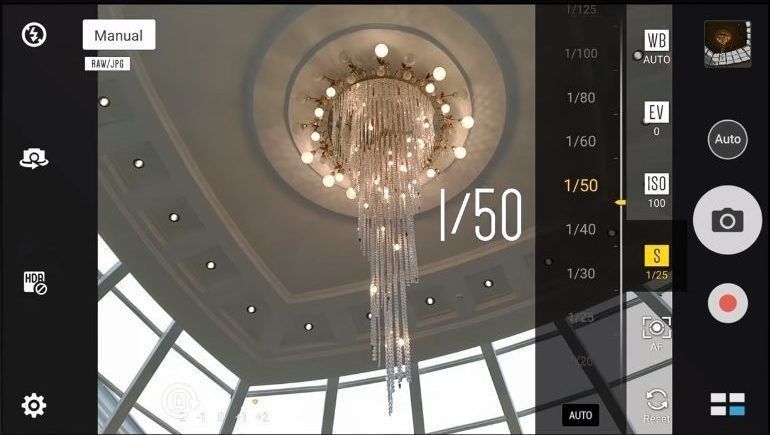
In addition to the main one, the Tricam system also has a built-in camera with a fisheye lens required to track the movement of the phone in space.
The third component in the system is a depth sensor with a built-in infrared projector. It acts as a scanner. By interacting with real world objects using this sensor, you can create virtual 3D models of these objects.
In addition to everything else for the main camera, there is a second generation laser autofocus, complementing phase and tracking autofocus, two-color LED flash and zero shutter lag.
This makes it easy to take cool photos:
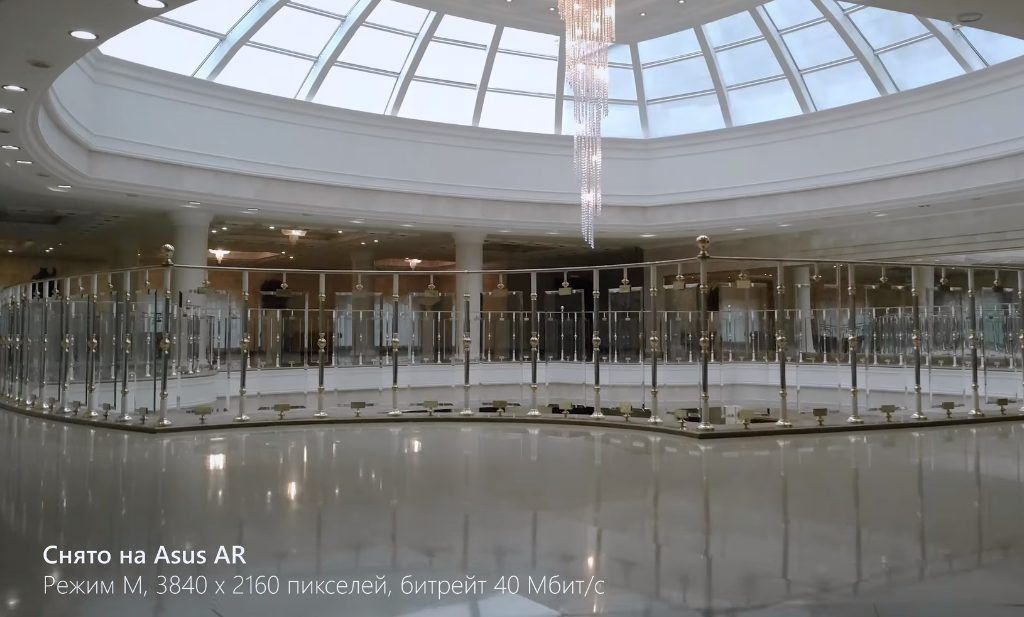
The front camera is also very good here. OmniVision OV8856 with 8MP sensor resolution and f / 2.0 aperture and HDR mode will make your selfies clear and rich, and the 85-degree field of view will allow you to cover a large area.
Battery
The phone has a 3300 mAh battery, but it depletes the charge very quickly. In high load mode, the battery loses about 1 percent per minute, which is very sad, since you won't be able to enjoy the effects of augmented and virtual reality for a long time.
Even the online tests are not impressive. In internet surfing mode, the battery lasts only 7 hours.
However, this is slightly offset by the Quick Charge 3.0 fast charging system, which allows you to fully charge the phone in just 2 hours.
Virtual and Augmented Reality
Google tango

First of all, let's pay attention to the object scanner, because it measures not only the distance to objects, but also its dimensions. It turns out such a three-dimensional ruler, which can be used, for example, in order to create models of furniture, and then place them in the room in AR (augmented reality) mode to see how it all will look, and based on this estimate how they can be arranged later. The popular furniture brand IKEA is already using this service.
Thanks to the built-in Google Tango service, you can now play games right on the wall of the room (Hot Wheels especially distinguished themselves here by creating an application with which you can build a virtual track), create a model of the universe or sit in a brand new BMW i8.
The application, created by BMW, allows you to examine in all details their new car, at the time of the release of the phone. Moreover, the detailing does honor to the creators of the application. All components are drawn as clearly as possible, the image of the car is fixed in one place and does not disappear, even if the user moves the camera to the other side.
The good news is that the Google Tango application does not need cards to model augmented reality objects, the phone system scans the room and creates its own markers. Nevertheless, minor glitches occur, due to which the program may ask you to rescan the premises.
Google daydream
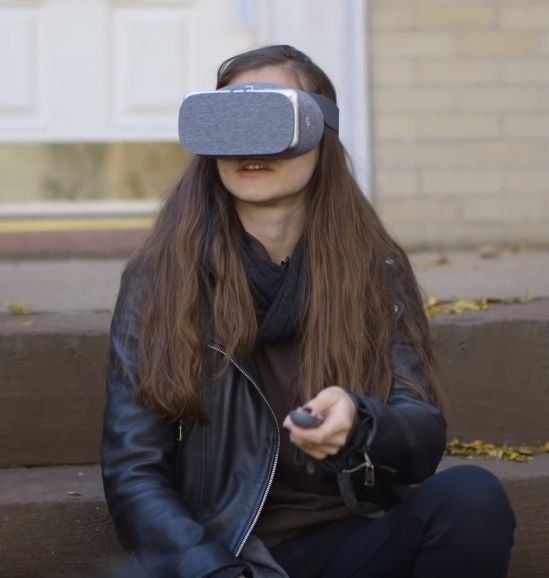
The phone comes with a special cartboard, which is a cardboard box with lenses, which is worn over the eyes, like glasses and is designed for full immersion in virtual reality. However, if you do not like the cardboard box that comes with it, instead of it, there are many tricky devices in the open spaces of the network, into which you can put the device to create virtual reality.
Instead of a screen, the smartphone itself is installed here, and applications are downloaded from the pre-installed Google Daydream service. A special remote control included in the kit is needed to control games in VR mode.
Price
The cost of the phone in Russia starts at 37,000 for a model with 32 GB of built-in and 6 GB of RAM.
In Belarus, the price tag starts from 1500 for version 6/64
Advantages and disadvantages
- Augmented reality is the main advantage of this device, for interaction with which the entire phone system is sharpened. All sensors providing VR and AR creation work without any complaints.
- Great camera. The developers from ASUS have surpassed not only themselves, but probably the rest of the flagship manufacturers. The camera here is probably one of the best we've seen in a smartphone of all time.
- Elegant design and convenience. The phone fits comfortably in the hand and the leather trim adds a pleasant feel to use.
- Decent processor and fast system. Since VR in general requires good hardware, manufacturers were forced to install a powerful flagship processor.
- First of all, this is throttling and CPU heating. Both the 820 and 821 Snapdragons suffered from this. There is nothing you can do about it, you have to put up with it. The processor heats up quickly and the heating is felt quite noticeably. Nevertheless, the performance of the chip remains at a high level.
- Low battery life.
- The number of apps for VR and AR services is small.
Conclusion
The era of virtual and augmented reality is getting closer, technologies in this area are rapidly developing, and this smartphone is another brick in the foundation of the building of the new world, in which virtuality will be increasingly connected with reality.
It seems to us that the moment is not far off when, using a smartphone or other device, it will be possible to find out information about a building or a road, simply by pointing a sensor at it.
Such a future is not only possible, it is already near. In the meantime, the developers are running their special software on special hardware, slowly bringing it closer.
new entries
Categories
Useful
Popular articles
-

Top rating of the best and inexpensive scooters up to 50 cubic meters in 2020
Views: 97661 -

Rating of the best materials for noise insulation for an apartment in 2020
Views: 95022 -

Rating of cheap analogues of expensive medicines for flu and colds for 2020
Views: 91750 -

The best men's running shoes in 2020
Views: 87680 -

Top ranking of the best smartwatches 2020 - price-quality
Views: 85091 -

Best Complex Vitamins in 2020
Views: 84801 -

The best dye for gray hair - 2020 top ranking
Views: 82406 -

Rating of the best wood paints for interior use in 2020
Views: 77202 -

Ranking of the best action cameras from China in 2020
Views: 75269 -

Rating of the best spinning reels in 2020
Views: 74827 -

The most effective calcium supplements for adults and children in 2020
Views: 72462 -

Top rating of the best means for male potency in 2020 with a description
Views: 68296



